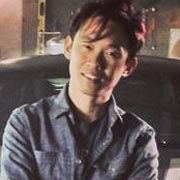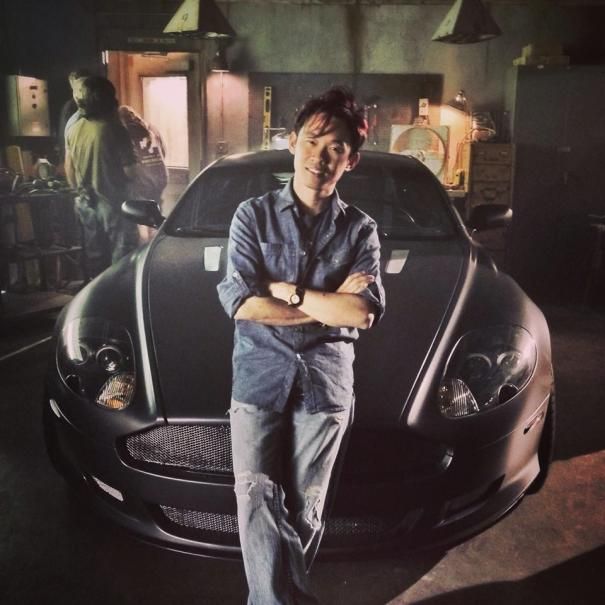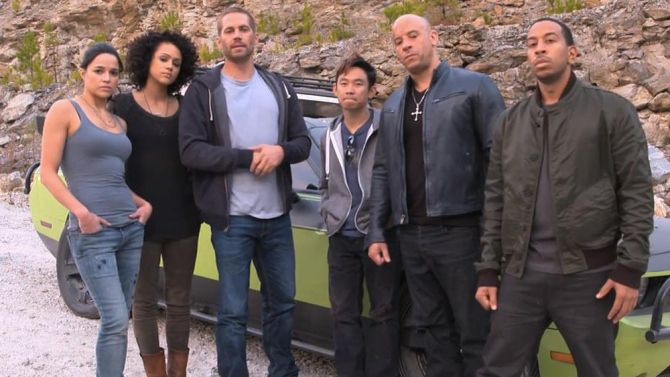Director James Wan has made a career based on scaring the hell out of moviegoers. But after launching memorable horror franchises like "Saw," "Insidious" and "The Conjuring," Wan is now revving up for his first action blockbuster flick, the highly-anticipated "Furious 7."
The latest installment in the popular "Fast and the Furious" series finds Dominic Toretto (Vin Diesel) and his crew laying low and leading normal lives after defeating Owen Shaw (Luke Evans) in "Furious 6." However, Owen's older brother, Deckard (Jason Statham), surfaces to seek revenge by targeting the tight-knit group, a goal Deckard began to work toward in the closing scenes of the film and, believe it or not, "Fast and the Furious 3: Tokyo Drift."
Wan spoke with SPINOFF ONLINE about jumping into the driver's seat for "Furious 7," from creating those high-adrenaline action sequences to completing the movie without Paul Walker and making his horror return with "The Conjuring 2."
Spinoff Online: How daunting was it coming on board a franchise as successful as "The Fast and the Furious?"
James Wan: I felt fairly comfortable segueing into it. I've always wanted to do a big action film -- I've always wanted to do a big-budgeted movie of any kind. Here was opportunity to do it, and I jumped straight into it. I really relish it. For that part of it, it was an incredible experience.
In the genre circle, you are well known and highly regarded as the horror guy. How did you get involved in this project?
Obviously, that reputation was the main reason I wanted to go and do something else. Hollywood has a tendency to pigeon-hole. If you are good at something, they typecast you and they think that's all you can do. They want you to keep doing the same thing for them. For me, I don't want to do that. I find that very limiting as a filmmaker. I found action is a natural segue for me. Like most people, I'm an action junkie. I felt the "Fast and the Furious" franchise has a lot of cool stuff already built into it, and that I could come in and have fun with it. When the gig came up for grabs, I went in there and pitched to the studio what my vision for the next movie could be. Ironically, I never once talked about the action or the stunts in the film. I talked about the characters and how the characters could grow and where they could go. I think because of that, it made the studio and the producers have confidence that I was the guy for this gig.
I think the other thing that gave them confidence is the fact that I have a track record. I've created so many horror franchises in my time, it's not like I'm just a new kid on the block who has never done this before. I've kind of conquered the genre that I was in. It was a natural thing for me to step up to do something different.
How does "Furious 7" build on the relationships and mythology established in previous installments?
How this one builds on the previous one is growing the episodic saga of these movies. It has a very melodramatic, soap-opera quality to it. I am continuing that soap-opera story, which is part of the reason I think people love it so much.
"Furious 7" obviously features plenty of spectacular action and fight sequences. What were some of the things you wanted to achieve to take the movie to the next level?
For me, in terms of the action, it wasn't a case of trying to outdo or top what the previous ones have done. I wanted to come up with stuff that I, myself, as an action fan have never quite seen before. So, there's the idea of parachuting cars, which we haven't really seen. Or, there are cars jumping between skyscrapers with a level of intensity I haven't seen before. And for the fights we do in this movie, I was excited about shooting them. There's a sequence in the movie that I really like, a fight sequence between Paul Walker and Tony Jaa, where they smash against a door and the door falls down into this long flight of stairs. They are riding the door down while fighting each other. That's such a cool visual fight sequence that I haven't seen before.
Those scenes can look amazing when scripted on the page, but how brutal were they to shoot?
Once you see this movie, you'll see how crazy the set pieces are, and there are so many of them. They all compose their own challenge, but at different levels. Filmmaking, like anything, whether it's a low-budget movie or a big movie, you take baby steps. You plan things out. You talk with your team about what you want. You tell people your vision and you just take it step-by-step. In terms of action and special effects, one of the other important things that you have to do early on is storyboard the sequences.
You download your vision and ideas to a storyboard artist, who then captures your visuals and you talk them through the shot. Once you have that, you take it to the next step, which in today's big-budget, filmmaking world is pre-viz. You pre-visualize the whole movie in a computer. They look at your storyboards and they basically put them in a 3-D environment. You are watching pre-viz that feels like an actual movie. It's shot from different angles. You get a sense of the pacing and flow. You really plan it down to a tee, so that way you can talk to everyone in your departments. They can see it and then they can plan and start prep for it. Those are the initial steps, and you just grow and grow on those steps.
On and off screen, the cast is all about family. Following Paul Walker's tragic death, how hard was it to continue without him? And once that decision was made, how important was it to make "Furious 7" the absolute best it could be?
Man, how hard was it to continue without Paul? It was hard. I don't necessarily mean from a technical standpoint, even though that was very difficult trying to do it technically and practically and logistically. It was hard just from an emotional standpoint. First, to come to terms with the shock of losing Paul. That took days to even sink in that happened. It was so surreal at the very start. I was having a hard time believing that actually happened.
When it finally sunk in, heartache really hit all of us. The idea for me, as a director, of having to go back on set, rally the cast and crew, and put on a brave face to try to push us along, that part of it was the biggest, most-daunting aspect for me. It was knowing that I had such a huge task ahead of me and dealing with my actors. It was dealing with Vin, Jordana [Brewster], Tyrese [Gibson] and Michelle [Rodriguez]. All these people had grown up with Paul, making this series of movies, and they are one big family. It was truly like losing a member of the family. They were hit very hard. I remember getting back on the first day of filming and how somber it was for all of us, and how difficult it was to pick the pieces back up and plow along. We all realized we had to do it. We had to finish this movie to honor Paul. Moving forward, it was all about finishing a film Paul would be proud of, that would honor his legacy and memory and give his fans one last chance to say goodbye to him.
Looking ahead, at one point it sounded like you were done with horror, but your next movie is "The Conjuring 2." Do you feel rejuvenated after "Furious 7?" Did you miss your creepy corner of the cinematic universe?
I did. I missed the quieter moments in that kind of filmmaking, the long take where you don't break things up with quick cuts. I missed that voice that is very difficult to incorporate into an action film like "Furious 7," that has a language and an aesthetic established already. I couldn't really put my own stamp on it as much as I would have loved to if this was a movie I was designing from scratch. The idea of going back and playing in the world I created is exciting for me.
"Furious 7" opens April 3.



